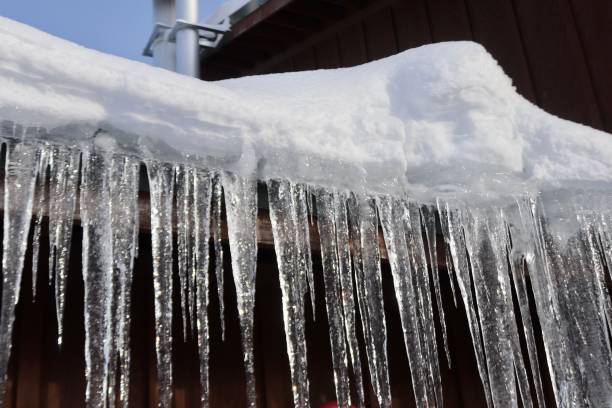Tips to Protect Your Pipes from Cold Weather: Specialist Guidance
Tips to Protect Your Pipes from Cold Weather: Specialist Guidance
Blog Article
They are making a number of great pointers related to How to prepare your home plumbing for winter weather overall in this great article followed below.

Winter can damage your pipes, especially by freezing pipes. Right here's how to stop it from occurring and what to do if it does.
Intro
As temperatures decline, the risk of icy pipes rises, potentially leading to expensive fixings and water damage. Recognizing how to avoid icy pipelines is important for property owners in chilly environments.
Avoidance Tips
Insulating prone pipelines
Cover pipelines in insulation sleeves or use warm tape to secure them from freezing temperature levels. Concentrate on pipelines in unheated or exterior areas of the home.
Heating methods
Maintain indoor areas appropriately heated, especially locations with pipes. Open up closet doors to permit cozy air to flow around pipelines under sinks.
Just how to recognize frozen pipes
Search for decreased water circulation from taps, uncommon odors or sounds from pipelines, and noticeable frost on exposed pipes.
Long-Term Solutions
Architectural modifications
Think about rerouting pipes far from exterior wall surfaces or unheated locations. Include additional insulation to attics, basements, and crawl spaces.
Upgrading insulation
Buy top quality insulation for pipelines, attics, and wall surfaces. Proper insulation helps keep constant temperatures and reduces the threat of frozen pipelines.
Shielding Outside Plumbing
Yard pipes and outdoor taps
Detach and drain pipes garden tubes before winter months. Set up frost-proof faucets or cover outdoor taps with protected caps.
Recognizing Frozen Pipelines
What creates pipes to ice up?
Pipelines freeze when subjected to temperature levels below 32 ° F (0 ° C) for expanded durations. As water inside the pipes freezes, it expands, putting pressure on the pipe wall surfaces and possibly triggering them to break.
Threats and damages
Frozen pipes can lead to supply of water disruptions, home damages, and costly repairs. Ruptured pipelines can flooding homes and trigger comprehensive architectural damage.
Signs of Frozen Pipes
Recognizing icy pipes early can prevent them from breaking.
What to Do If Your Pipes Freeze
Immediate actions to take
If you suspect icy pipes, maintain taps available to ease stress as the ice thaws. Use a hairdryer or towels taken in hot water to thaw pipelines slowly.
Verdict
Stopping frozen pipelines needs aggressive steps and fast actions. By comprehending the reasons, signs, and safety nets, property owners can safeguard their pipes during winter.
Helpful Tips to Prevent Frozen Pipes this Winter
UNDERSTANDING THE BASICS: WHY PIPES FREEZE AND WHY IT’S A PROBLEM
Water freezing inside pipes is common during the winter months, but understanding why pipes freeze, and the potential problems it can cause is crucial in preventing such incidents. This section will delve into the basics of why pipes freeze and the associated problems that may arise.
THE SCIENCE BEHIND FROZEN PIPES
When water reaches freezing temperatures, it undergoes a physical transformation and solidifies into ice. This expansion of water as it freezes is the primary reason pipes can burst. As the water inside the pipe freezes, it expands, creating immense pressure on the walls. If the pressure becomes too great, the pipe can crack or rupture, leading to leaks and water damage.
FACTORS THAT CONTRIBUTE TO PIPE FREEZING
Low Temperatures: Extremely cold weather, especially below freezing, increases the risk of pipes freezing. Uninsulated or Poorly Insulated Pipes: Pipes located in unheated areas, such as basements, crawl spaces, or attics, are more prone to freezing. Insufficient insulation or lack of insulation altogether exacerbates the problem. Exterior Wall Exposure: Pipes running along exterior walls are susceptible to freezing as they encounter colder temperatures outside. Lack of Heating or Temperature Regulation: Inadequate heating or inconsistent temperature control in your home can contribute to frozen pipes. PROBLEMS CAUSED BY FROZEN PIPES
- Pipe Bursting: As mentioned earlier, the expansion of water as it freezes can cause pipes to burst, resulting in significant water damage.
- Water Damage: When pipes burst, it can lead to flooding and water damage to your property, including walls, ceilings, flooring, and personal belongings.
- Structural Damage: Prolonged exposure to water from burst pipes can compromise the structural integrity of your home, leading to costly repairs.
- Mold and Mildew Growth: Excess moisture from water damage can create a favorable environment for mold and mildew growth, posing health risks to occupants.
- Disrupted Water Supply: Frozen pipes can also result in a complete or partial loss of water supply until the issue is resolved.
WHY CERTAIN PIPES ARE MORE PRONE TO FREEZING
- Location: Pipes located in unheated or poorly insulated areas, such as basements, crawl spaces, attics, or exterior walls, are at higher risk of freezing.
- Exterior Pipes: Outdoor pipes, such as those used for irrigation or exposed plumbing, are particularly vulnerable to freezing as they are directly exposed to the elements.
- Supply Lines: Pipes that carry water from the main water supply into your home, including the main water line, are critical to protect as freezing in these lines can affect your entire plumbing system.
- Underground Pipes: Pipes buried underground, such as those connected to sprinkler systems or outdoor faucets, can be susceptible to freezing if not properly insulated.
https://busybusy.com/blog/helpful-tips-to-prevent-frozen-pipes-this-winter/

I'm just very enthusiastic about Prevent Frozen Pipes and I really hope you enjoyed reading my entry. Do you know about another person who is interested in Preventing and dealing with frozen pipes? Why not promote it. We truly appreciate reading our article about How to Prevent Your Pipes From Freezing.
Request Free Estimate Report this page